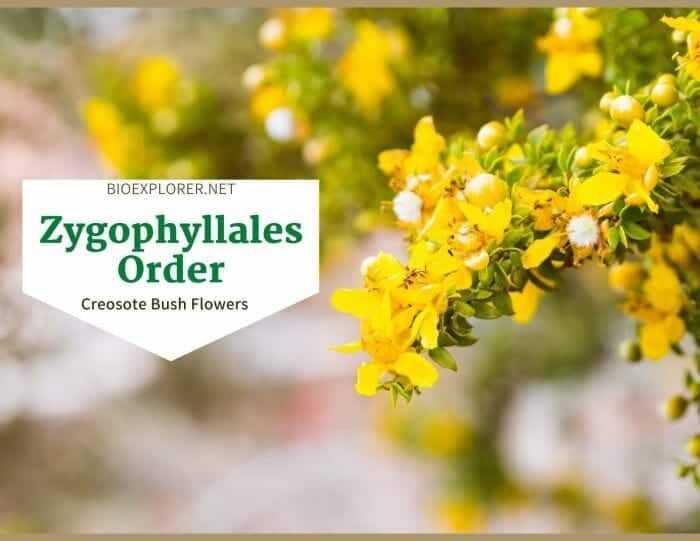
Order Zygophyllales contains herbs, shrubs, trees, and hemiparasitesWhat is hemiparasites?A parasitic plant containing chlorophyll and therefore partly self-sustaining as in mistletoe. (rare) limited to tropical or temperate dry or saline regions. The members of the Zygophyllales often have swollen nodes and opposite, resinous, and stipulate leaves.
The Zygophyllales flowers are bisexual, with often 5 sepals, 5 petals, 10 stamens, 5 carpels, and a superior ovary. The creosote bush, chaparral, Verawood, and the rhatany are known examples of the Zygophyllales order.
Table of Contents
Zygophyllales Families
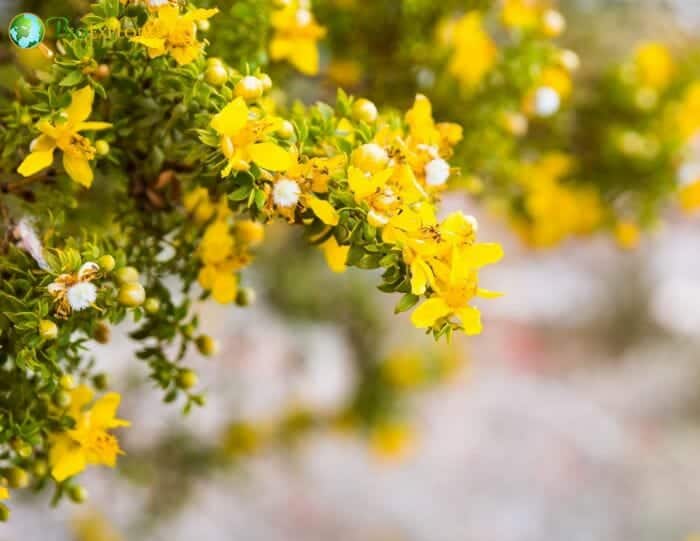
APG IV classification system places two families under the Zygophyllales order of dicotyledonous flowering plants.
- Zygophyllaceae (Bean-caper family)
- Krameriaceae (Rhatany family)
![]()
Zygophyllales Distribution
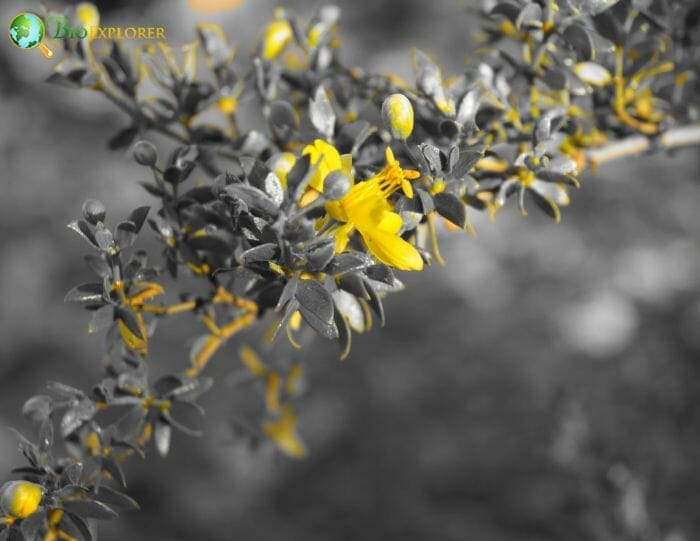
Plants of Zygophyllales are primarily limited to tropical or temperate arid or saline regions.
- The members of the Zygophyllaceae family (22 genera and 285 species)[1] are distributed in dry and warm/cool temperate. The species of the family are also tropical.
- The plants of Krameriaceae (1 genus and 18 species) are found in the dry and warm regions of the Americas.
![]()
Zygophyllales Characteristics
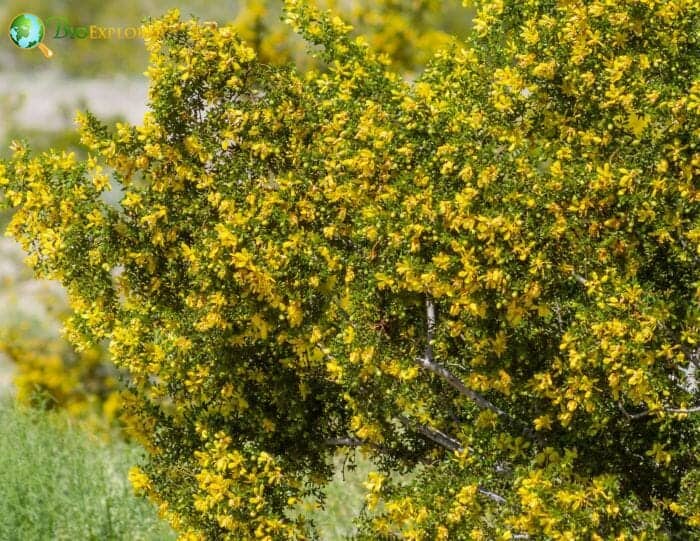
- Plant type: The species of Zygophyllales are herbs, trees, or shrubs. Rare plants are hemiparasites.
- Stems: The stems of the plants often have swollen nodes. Some taxa have thorny stems.
- Leaves: Most leaves are opposite, resinous, and stipulate.
- Flowers and Inflorescences: The flowers are bisexual. These flowers are solitary, in cyme, or raceme.
- Sepals and Petals: The flowers of the Zygophyllales have 5 sepals and 5 petals.
- Stamens and carpels: Most stamens are 10; biseriate. Other species are 4-5; uniseriate. The majority of the species have 5 carpels.
- Ovary and Fruits: The ovary of the members is superior. The Zygophyllales fruit is a capsule or a berry.
- Seeds: Most seeds do not have endospermWhat is endosperm?An embryonic nutritive tissue formed during double fertilization by the fusion of a sperm with the polar nuclei..
![]()
Zygophyllales Flowers and Reproduction
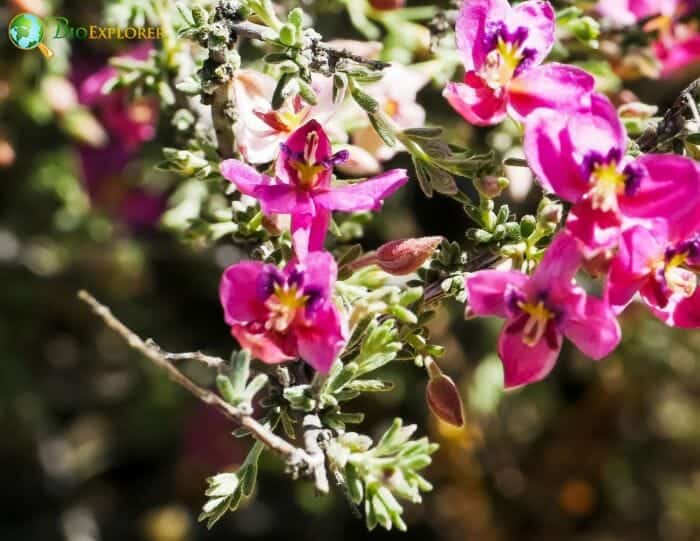
The flowers of Zygophyllaceae are actinomorphicWhat is actinomorphic?A characteristic of the flower exhibiting radial symmetry such as starfish or Daisy flower; capable of being bisected into identical halves along more than one axis, forming mirror images. Opposite is Zygomorphic. and usually bisexual. They are solitary or in a cyme or raceme. The usually biseriate perianth is composed of often 5 imbricateWhat is imbricate?overlap or cause to overlap; in botany terms, scales, sepals, or plates having adjacent edges overlapping; with margins of structures overlapping like shingles on a roof. or valvateWhat is valvate?Sepals having adjacent edges abutting rather than overlapping; opening by valves; edges of structures coming together so that the margins touch but won't overlap. sepals and 5 valvate, convolute, or imbricate petals.
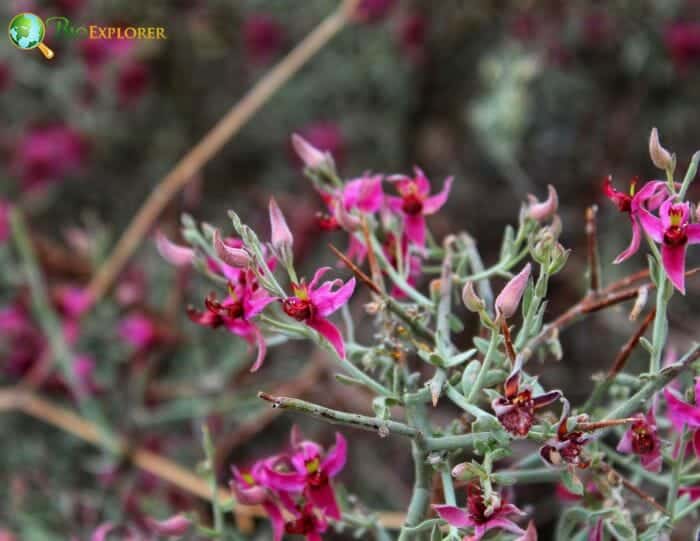
- Some species have 4 or 6 sepals and 4, 6 or zero petals. The 10 stamens are usually biseriate. The gynoeciumWhat is gynoecium?It is a collective term for all carpels (female parts) in a flower. Carpels can be either apocarpous (separate) or syncarpous (combined or united) of the flowers is syncarpousWhat is syncarpous?Flowering having united carpels; Contrast apocarpous. with usually 5 carpels, locules, and a superior ovary. The flowers have a solitary style. The nectaries are often present.
- Pollination of the Zygophyllaceae is entomophilousWhat is entomophilous?Pollination by insects. Contrast anemophilous (wind-pollination).. The creosote bush[2] blooms profusely in spring and consists of 5 velvety yellow petals. The petals of the creosote bush twist 90 degrees following the pollination.
- The Krameriaceae flowers are solitary or in a terminal raceme. These bisexual flowers are hypogynous and zygomorphicWhat is zygomorphic?A characteristic of the flower having only one plane of symmetry, as in a pea or snapdragon; bilaterally symmetrical; especially in reference to a flower or corolla; Opposite is Actinomorphic; irregular flower;. The biseriate perianth is composed of pentamerousWhat is pentamerous?Having parts in fives or multiples of five. calyxWhat is calyx?A collective term for all the sepals of a flower; the lowermost whorl of floral orgrans (Plural form is calyces). and corollaWhat is corolla?A collective term referring to the petals of a flower.. The sepals are imbricate, and the adaxial surface of the sepals is petaloid.
- The 3 posterior petals of the Krameriaceae flowers are clawed and elongated. The 2 frontal petals are reduced to lipid-secreting glands. The stamens are often 4 (5)[3], uniseriate, and alternipetalous. The syncarpous gynoecium has a superior ovary, 1 fertile carpel, and 1 sterile carpel.
- The flowers of Krameriaceae do not have nectaries. Pollination is also entomophilous. The insects are hymenoptera[4] (oil-collecting bees). The female Centris bees accumulate the oils from the glands of the flowers to feed their larvae.
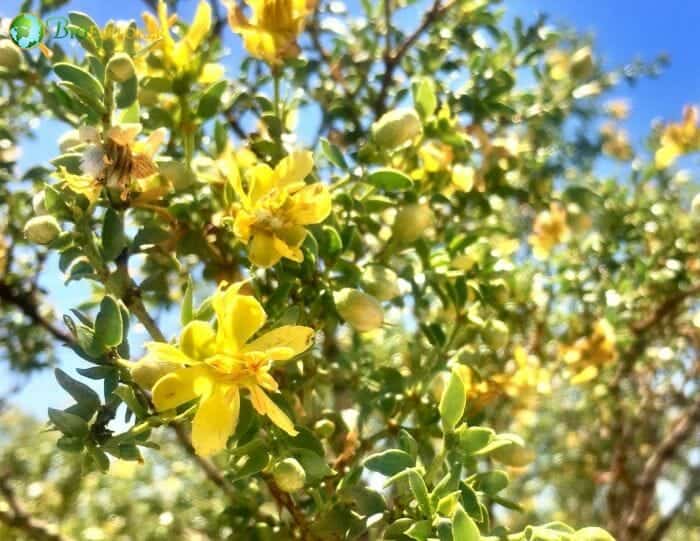
![]()
Zygophyllales Family Differences
Zygophyllaceae
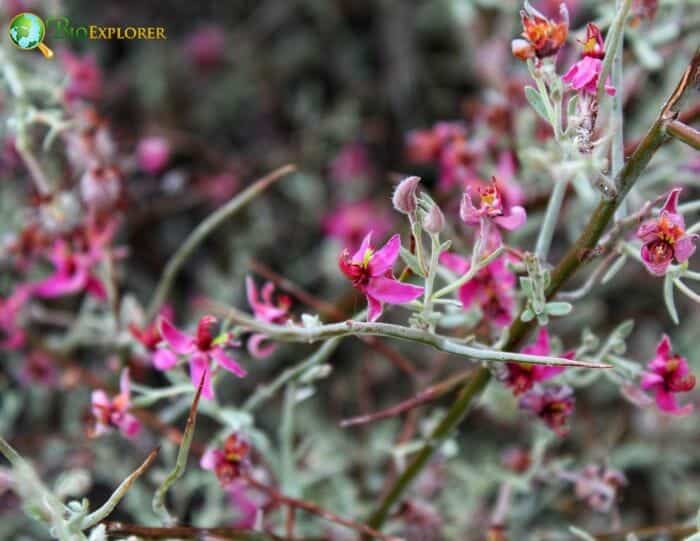
- Members of the family are primarily shrubs or trees. Other species are herbs.
- Most leaves are opposite, resinous, and stipulate. Other species have leaves that are paripinnate, geminate, and trifoliate.
- The flowers are commonly actinomorphic and bisexual. The flowers are solitary, in cymes, or raceme.
- Usually, there are 5 sepals in the calyx and 5 petals in the corolla.
- Typically, the stamens are biseriate and usually 10. However, there are often 5 carpels in the syncarpous gynoecium.
- The Zygophyllaceae ovary is superior, and the fruit is a capsule or a schizocarp. In rare cases, the fruit is a drupe or a berry.
- The seeds have an oily endosperm. Some lack endosperm.
![]()
Krameriaceae
- The members of Krameriaceae are trees, herbs, and hemiparasitic shrubs.
- The Krameriaceae leaves are simple or ternate. These leaves are spiral and exstipulateWhat is exstipulate?Without stipules; Stipule is a small structure of appendage found at the base of some leaf petioles..
- The flowers are bisexual and zygomorphic. The inflorescence is the solitary or terminal raceme.
- There are 5 imbricate sepals in the calyx and 5 often sympetalous petals in the corolla.
- There are 4-5 stamens; alternipetalous and usually uniseriate. The gynoecium is syncarpous with 2 carpels.
- The Krameriaceae ovary is superior, and the fruit is a 1-seeded nut or capsule.
![]()
Zygophyllales Example Species
Many species of Zygophyllales are economically and ecologically important. The following are the example species of this order.
- Creosote bush: Creosote bush is a traditional herbal medicine among Native Americans.
- Chaparral: The chaparral is used as folk medicine with anti-inflammatory[5] properties.
- Verawood: The Verawood is used for landscaping applications. The wood is also used similarly to that of Lignum vitae.
- Arizona poppy: The seeds of the Arizona Poppy are used as dove and quail food in the wildlife. The Arizona poppies are also ideal as garden plants. Is Poppy one of the August Flowers?
- Warty caltrop: The seeds are bird food in the wildlife.
- False puncture vine: The leaves of the False puncture vine are edible when cooked. The plant has many medicinal uses. The False puncture vine is also used as a garden plant.
- Virgin’s mantle: The plant has a chemical composition with medical significance.
- White rhatany: White rhatany is an essential forage for wildlife in its natural habitat. It also has ethnobotanical uses[6].
- Peruvian rhatany: The root extracts are used in the wine industry. Furthermore, the roots manifest great medicinal value.
- Roughbark lignum-vitae: The resin of the tree is used as a flavoring. The parts of the plant (the wood and the resin) are used in traditional medicine. Wood has many applications because it is dense, durable, hard, tough, and close-grained.
![]()











